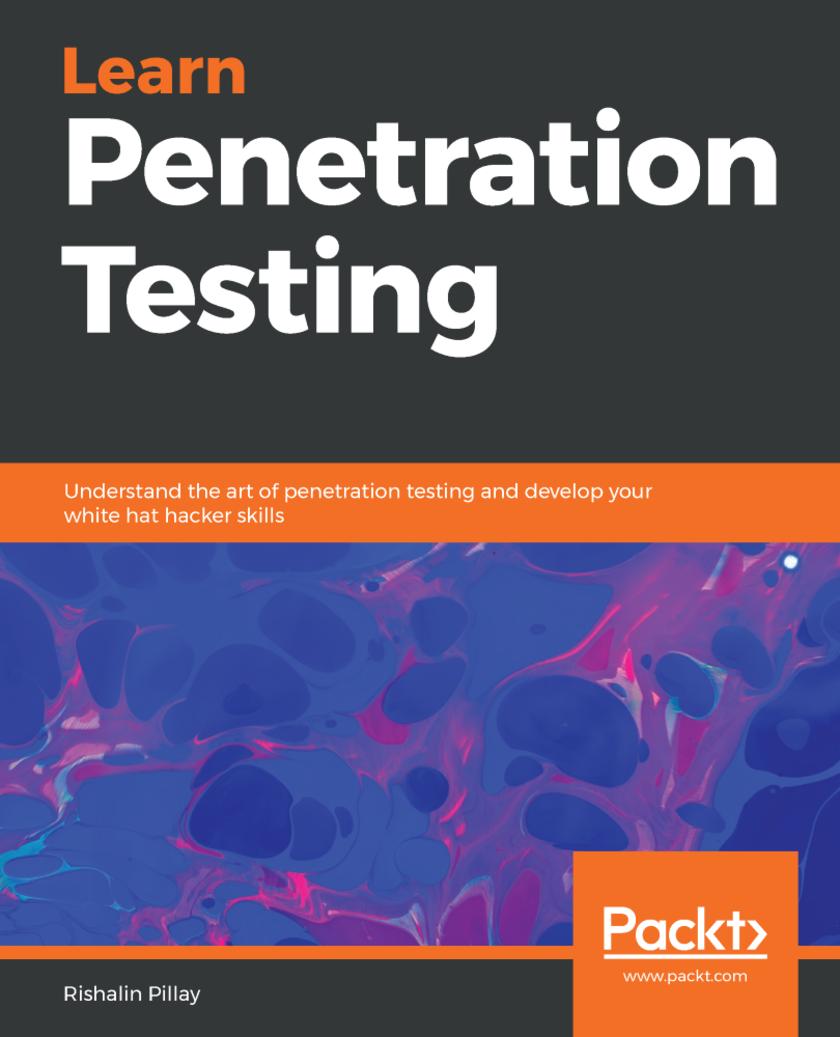
Learn Penetration Testing
¥70.84
Get up to speed with various penetration testing techniques and resolve security threats of varying complexity Key Features * Enhance your penetration testing skills to tackle security threats * Learn to gather information, find vulnerabilities, and exploit enterprise defenses * Navigate secured systems with the most up-to-date version of Kali Linux (2019.1) and Metasploit (5.0.0) Book Description Sending information via the internet is not entirely private, as evidenced by the rise in hacking, malware attacks, and security threats. With the help of this book, you'll learn crucial penetration testing techniques to help you evaluate enterprise defenses. You'll start by understanding each stage of pentesting and deploying target virtual machines, including Linux and Windows. Next, the book will guide you through performing intermediate penetration testing in a controlled environment. With the help of practical use cases, you'll also be able to implement your learning in real-world scenarios. By studying everything from setting up your lab, information gathering and password attacks, through to social engineering and post exploitation, you'll be able to successfully overcome security threats. The book will even help you leverage the best tools, such as Kali Linux, Metasploit, Burp Suite, and other open source pentesting tools to perform these techniques. Toward the later chapters, you'll focus on best practices to quickly resolve security threats. By the end of this book, you'll be well versed with various penetration testing techniques so as to be able to tackle security threats effectively What you will learn * Perform entry-level penetration tests by learning various concepts and techniques * Understand both common and not-so-common vulnerabilities from an attacker's perspective * Get familiar with intermediate attack methods that can be used in real-world scenarios * Understand how vulnerabilities are created by developers and how to fix some of them at source code level * Become well versed with basic tools for ethical hacking purposes * Exploit known vulnerable services with tools such as Metasploit Who this book is for If you’re just getting started with penetration testing and want to explore various security domains, this book is for you. Security professionals, network engineers, and amateur ethical hackers will also find this book useful. Prior knowledge of penetration testing and ethical hacking is not necessary.
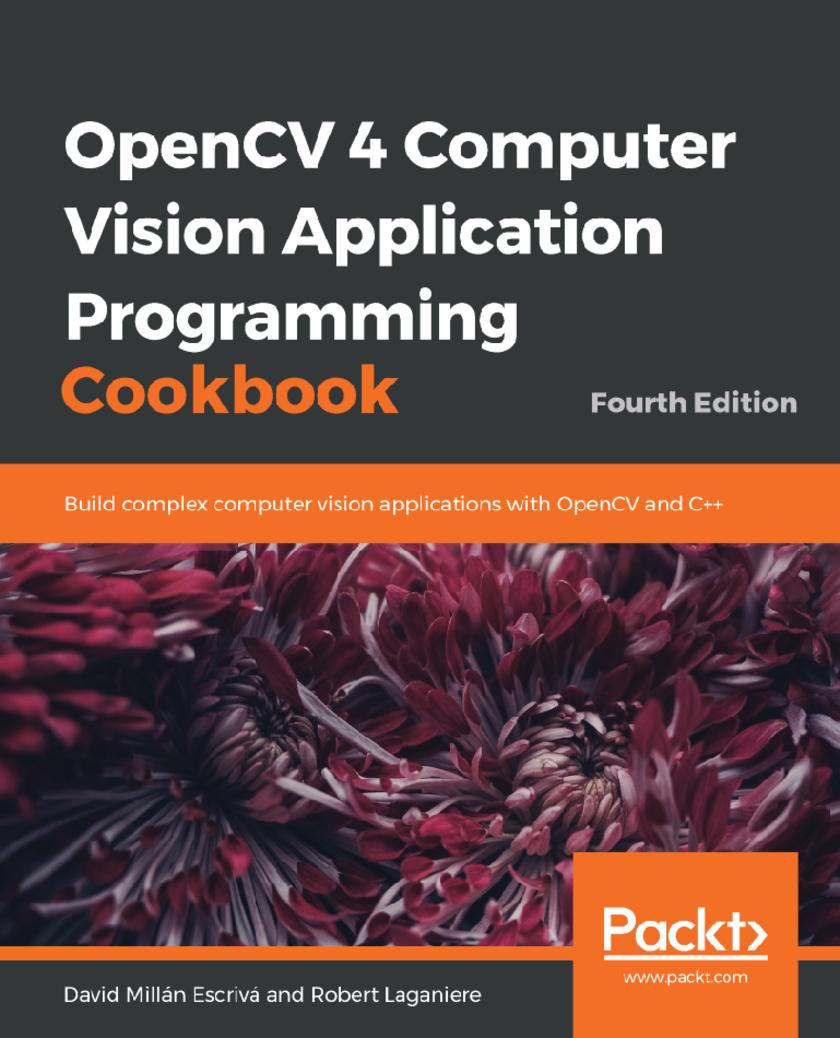
OpenCV 4 Computer Vision Application Programming Cookbook
¥70.84
Discover interesting recipes to help you understand the concepts of object detection, image processing, and facial detection Key Features * Explore the latest features and APIs in OpenCV 4 and build computer vision algorithms * Develop effective, robust, and fail-safe vision for your applications * Build computer vision algorithms with machine learning capabilities Book Description OpenCV is an image and video processing library used for all types of image and video analysis. Throughout the book, you'll work through recipes that implement a variety of tasks, such as facial recognition and detection. With 70 self-contained tutorials, this book examines common pain points and best practices for computer vision (CV) developers. Each recipe addresses a specific problem and offers a proven, best-practice solution with insights into how it works, so that you can copy the code and configuration files and modify them to suit your needs. This book begins by setting up OpenCV, and explains how to manipulate pixels. You'll understand how you can process images with classes and count pixels with histograms. You'll also learn detecting, describing, and matching interest points. As you advance through the chapters, you'll get to grips with estimating projective relations in images, reconstructing 3D scenes, processing video sequences, and tracking visual motion. In the final chapters, you'll cover deep learning concepts such as face and object detection. By the end of the book, you'll be able to confidently implement a range to computer vision algorithms to meet the technical requirements of your complex CV projects What you will learn * Install and create a program using the OpenCV library * Segment images into homogenous regions and extract meaningful objects * Apply image filters to enhance image content * Exploit image geometry to relay different views of a pictured scene * Calibrate the camera from different image observations * Detect people and objects in images using machine learning techniques * Reconstruct a 3D scene from images * Explore face detection using deep learning Who this book is for If you’re a CV developer or professional who already uses or would like to use OpenCV for building computer vision software, this book is for you. You’ll also find this book useful if you’re a C++ programmer looking to extend your computer vision skillset by learning OpenCV.
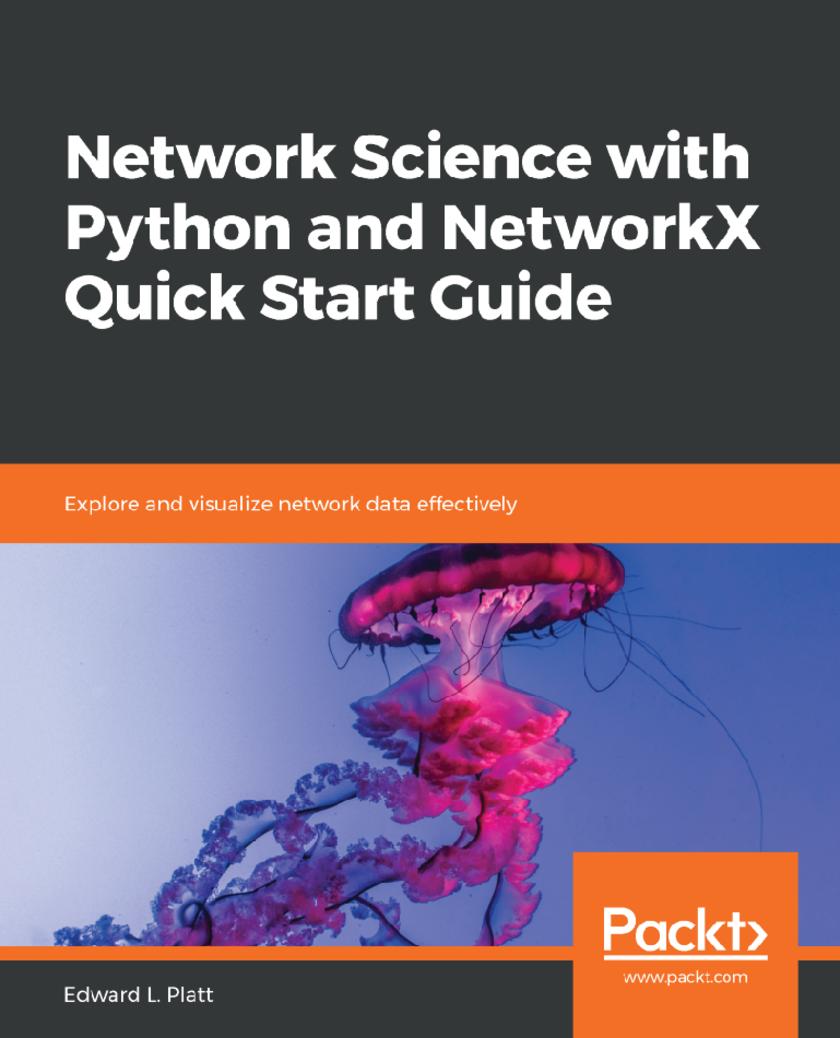
Network Science with Python and NetworkX Quick Start Guide
¥53.40
Manipulate and analyze network data with the power of Python and NetworkX Key Features * Understand the terminology and basic concepts of network science * Leverage the power of Python and NetworkX to represent data as a network * Apply common techniques for working with network data of varying sizes Book Description NetworkX is a leading free and open source package used for network science with the Python programming language. NetworkX can track properties of individuals and relationships, find communities, analyze resilience, detect key network locations, and perform a wide range of important tasks. With the recent release of version 2, NetworkX has been updated to be more powerful and easy to use. If you’re a data scientist, engineer, or computational social scientist, this book will guide you in using the Python programming language to gain insights into real-world networks. Starting with the fundamentals, you’ll be introduced to the core concepts of network science, along with examples that use real-world data and Python code. This book will introduce you to theoretical concepts such as scale-free and small-world networks, centrality measures, and agent-based modeling. You’ll also be able to look for scale-free networks in real data and visualize a network using circular, directed, and shell layouts. By the end of this book, you’ll be able to choose appropriate network representations, use NetworkX to build and characterize networks, and uncover insights while working with real-world systems. What you will learn * Use Python and NetworkX to analyze the properties of individuals and relationships * Encode data in network nodes and edges using NetworkX * Manipulate, store, and summarize data in network nodes and edges * Visualize a network using circular, directed and shell layouts * Find out how simulating behavior on networks can give insights into real-world problems * Understand the ongoing impact of network science on society, and its ethical considerations Who this book is for If you are a programmer or data scientist who wants to manipulate and analyze network data in Python, this book is perfect for you. Although prior knowledge of network science is not necessary, some Python programming experience will help you understand the concepts covered in the book easily.
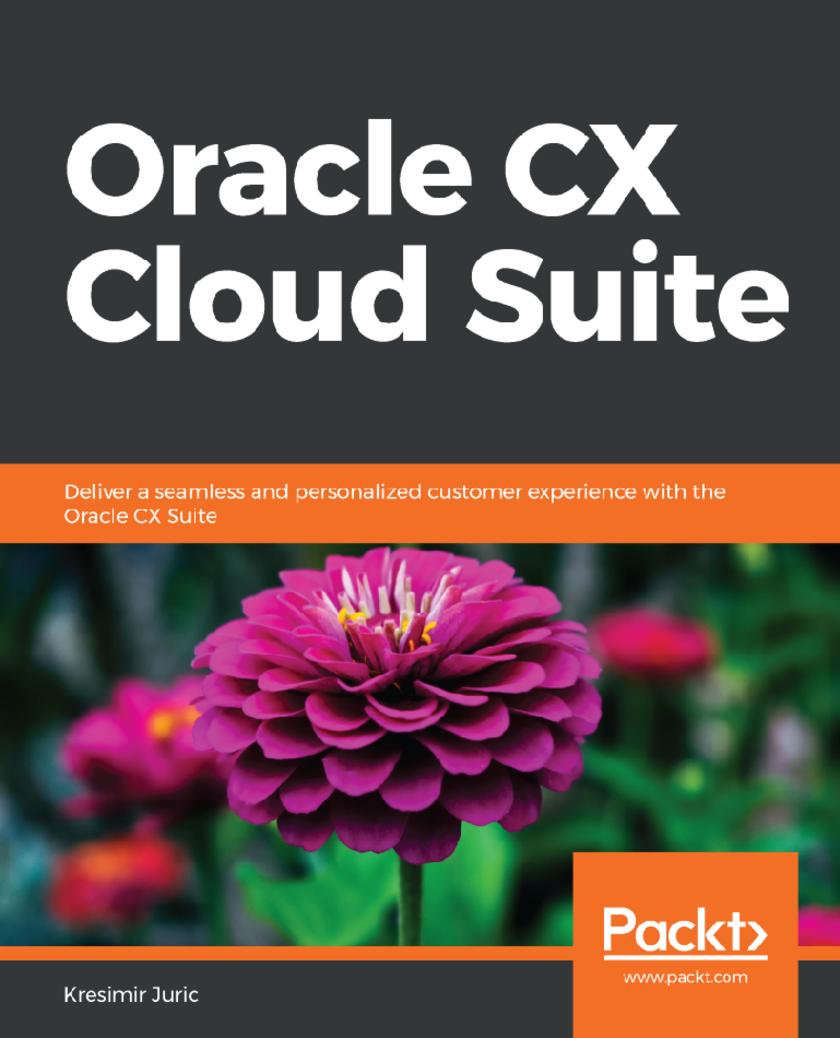
Oracle CX Cloud Suite
¥63.21
Gain a complete overview of Oracle CX Cloud Suite and its tools for functions ranging from marketing to sales and commerce to service Key Features * Make optimal use of your Oracle CX Cloud Suite to improve business results * Achieve improved customer insights through Oracle CX’s advanced capabilities * Learn how to design a CX solution architecture Book Description Oracle CX Cloud offers features and capabilities that help companies excel at sales, customer management, and much more. This book is a detailed guide to implementing cloud solutions and helping administrators of all levels thoroughly understand the platform. Oracle CX Cloud Suite begins with an introduction to high-level Oracle architecture and examines what CX offers over CRM. You’ll explore the different cloud-based tools for marketing, sales, and customer services, among others. The book then delves into deployment by covering basic settings, setting up users, and provisioning. You’ll see how to integrate the CX suite to work together to interact with the environment and connect with legacy systems, social connectors, and internet services. The book concludes with a use case demonstrating how the entire Oracle CX Suite is set up, and also covers how to leverage Oracle ICS and Oracle CX Cloud for hybrid deployment. By end of the book, you will have learned about the working of the Oracle CX Cloud Suite and how to orchestrate user experience across all products seamlessly. What you will learn * Differentiate between Oracle CRM and CX Cloud suites * Explore a variety of Oracle CX Cloud tools for marketing and sales * Set up users and database connections during deployment * Employ Cloud Suite CX tools to aid in planning and analysis * Implement hybrid Oracle CX solutions and connect with legacy systems * Integrate with social media connectors like Facebook and LinkedIn * Leverage Oracle ICS and Oracle CX Suite to improve business results Who this book is for This book is for administrators who want to develop and strengthen their Oracle CX Cloud Suite skills in the areas of configuration and system management. Whether you are a new administrator or an experienced professional, this book will enhance your understanding of the new Oracle CX features.
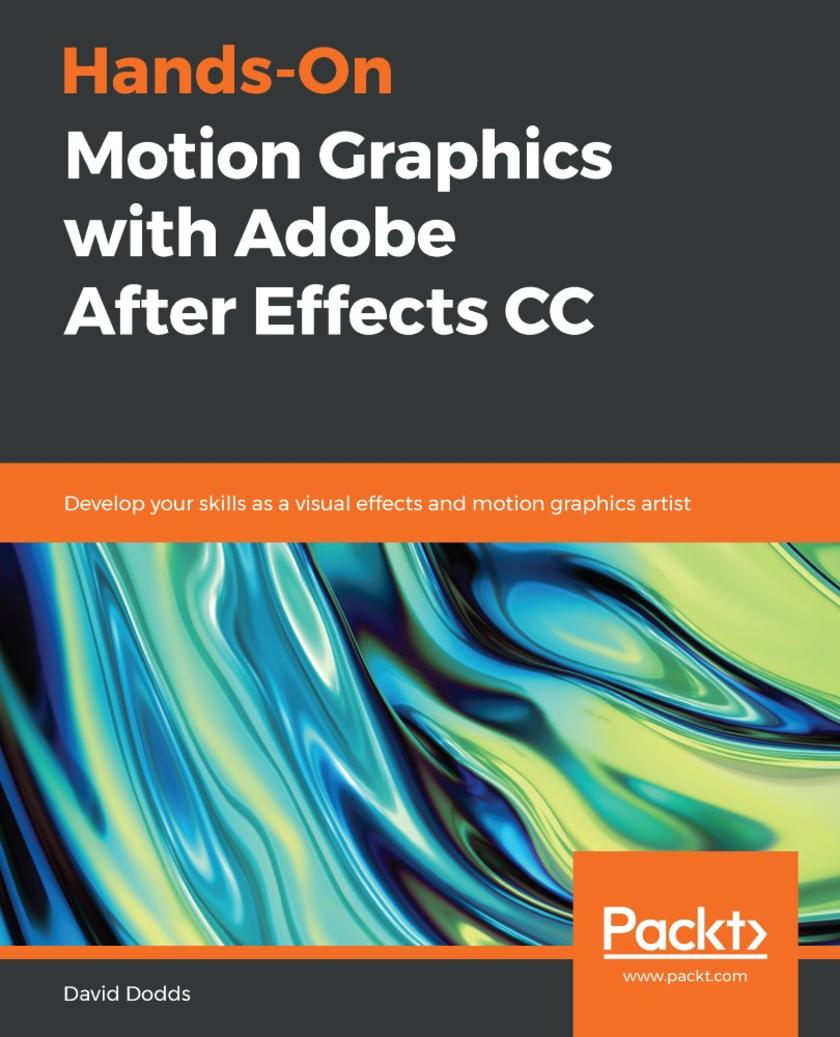
Hands-On Motion Graphics with Adobe After Effects CC
¥79.56
Discover techniques to enhance your videos with complex animation Key Features * Design, animate, and sequence a complete motion graphics project * Work with compositions and pre-compositions to create animations speedily * Maximize your motion graphics and visual effects skills Book Description If you’re thinking seriously about making and publishing your videos with professional editing and animation, look no further! Adobe After Effects is a popular tool among video editors and YouTubers to enhance their videos and bring them to life by implementing visual effects and motion graphics. This book will take you right from the basics through to the advanced techniques in Adobe After Effects CC 2018. You will start by setting up your editing environment to learn and improve techniques to sharpen your video editing skills. Furthermore, you will work with basic and advanced special effects to create, modify, and optimize motion graphics in your videos. Lastly, you will not only learn how to create 2.5D animations, but also get to grips with using Cinema 4D Lite to build and animate complete 3D scenes. By the end of the book, you’ll have learned how to package a video efficiently with the help of the projects covered. What you will learn * Create a lower third project for a TV show with complex layers * Work with shape layer animation to create an animated lyrics video * Explore different tools to animate characters * Apply text animation to create a dynamic film-opening title * Use professional visual effects to create a VFX project * Model, light, and composite your 3D project in After Effects Who this book is for If you’re a student, professional, YouTuber, or anyone who is interested in video editing, animation, and motion graphics, this book is for you. You’ll also find this resource useful if you’re an Illustrator looking to put your creations in motion.
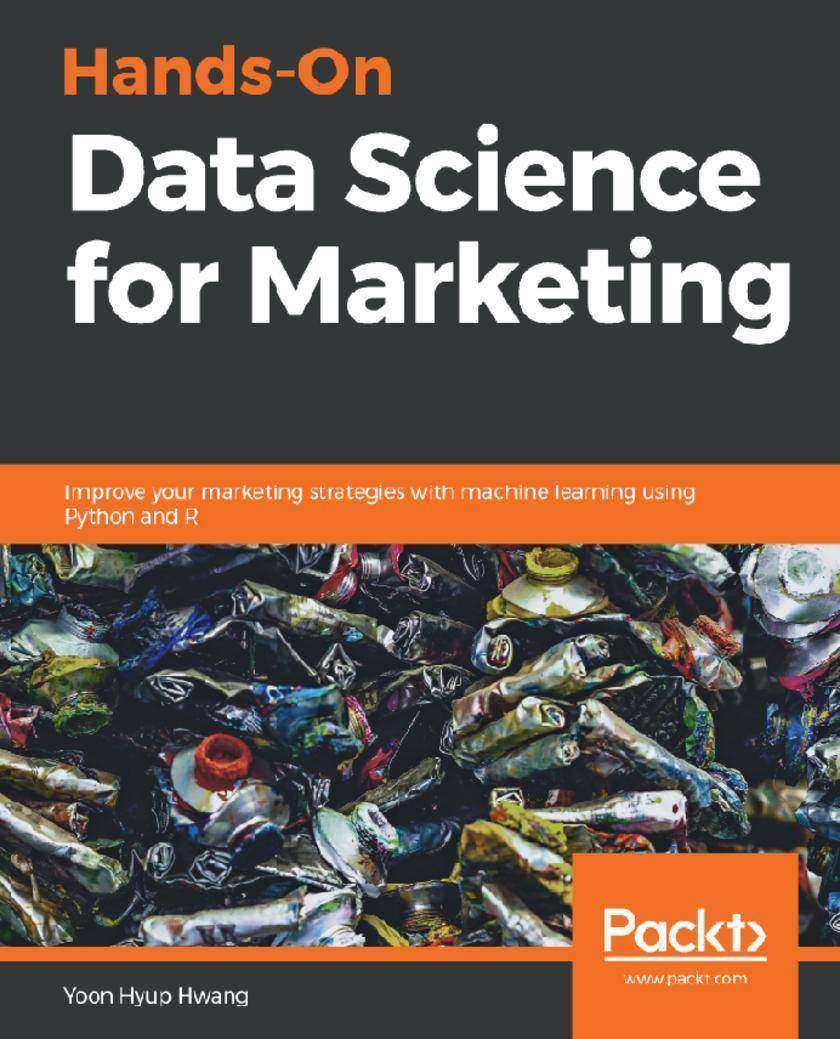
Hands-On Data Science for Marketing
¥81.74
Optimize your marketing strategies through analytics and machine learning Key Features * Understand how data science drives successful marketing campaigns * Use machine learning for better customer engagement, retention, and product recommendations * Extract insights from your data to optimize marketing strategies and increase profitability Book Description Regardless of company size, the adoption of data science and machine learning for marketing has been rising in the industry. With this book, you will learn to implement data science techniques to understand the drivers behind the successes and failures of marketing campaigns. This book is a comprehensive guide to help you understand and predict customer behaviors and create more effectively targeted and personalized marketing strategies. This is a practical guide to performing simple-to-advanced tasks, to extract hidden insights from the data and use them to make smart business decisions. You will understand what drives sales and increases customer engagements for your products. You will learn to implement machine learning to forecast which customers are more likely to engage with the products and have high lifetime value. This book will also show you how to use machine learning techniques to understand different customer segments and recommend the right products for each customer. Apart from learning to gain insights into consumer behavior using exploratory analysis, you will also learn the concept of A/B testing and implement it using Python and R. By the end of this book, you will be experienced enough with various data science and machine learning techniques to run and manage successful marketing campaigns for your business. What you will learn * Learn how to compute and visualize marketing KPIs in Python and R * Master what drives successful marketing campaigns with data science * Use machine learning to predict customer engagement and lifetime value * Make product recommendations that customers are most likely to buy * Learn how to use A/B testing for better marketing decision making * Implement machine learning to understand different customer segments Who this book is for If you are a marketing professional, data scientist, engineer, or a student keen to learn how to apply data science to marketing, this book is what you need! It will be beneficial to have some basic knowledge of either Python or R to work through the examples. This book will also be beneficial for beginners as it covers basic-to-advanced data science concepts and applications in marketing with real-life examples.
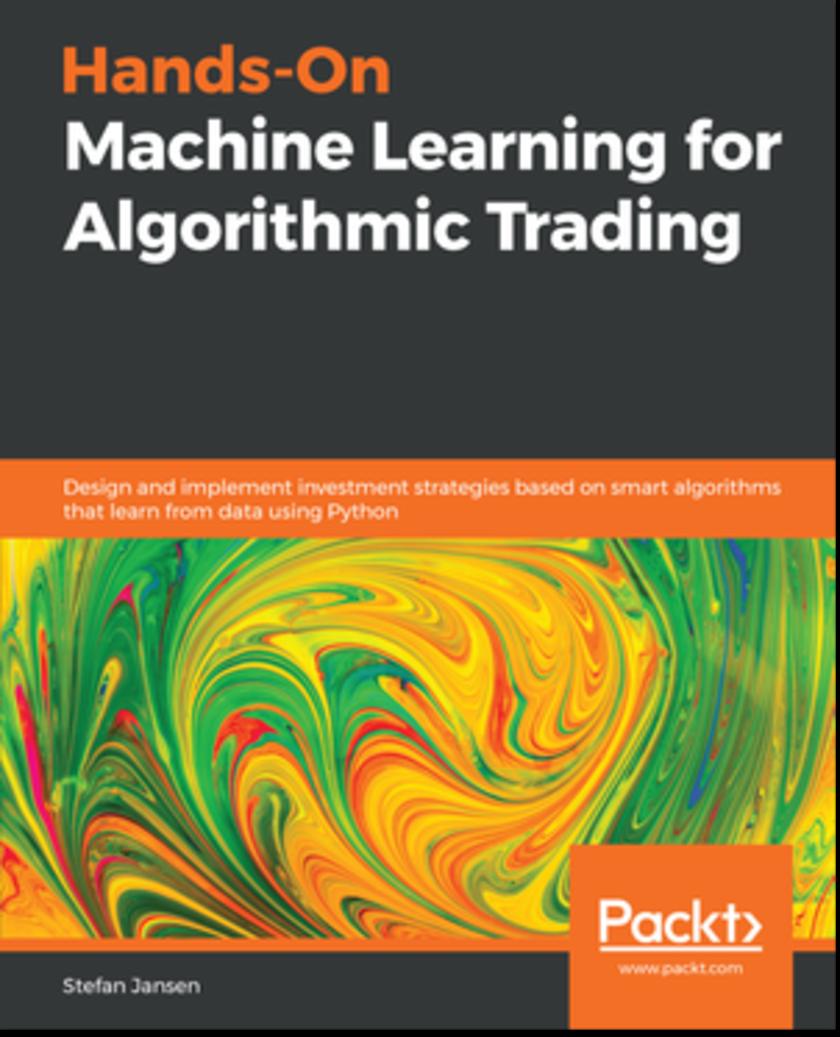
Mastering Python for Finance
¥70.84
Take your financial skills to the next level by mastering cutting-edge mathematical and statistical financial applications Key Features * Explore advanced financial models used by the industry and ways of solving them using Python * Build state-of-the-art infrastructure for modeling, visualization, trading, and more * Empower your financial applications by applying machine learning and deep learning Book Description The second edition of Mastering Python for Finance will guide you through carrying out complex financial calculations practiced in the industry of finance by using next-generation methodologies. You will master the Python ecosystem by leveraging publicly available tools to successfully perform research studies and modeling, and learn to manage risks with the help of advanced examples. You will start by setting up your Jupyter notebook to implement the tasks throughout the book. You will learn to make efficient and powerful data-driven financial decisions using popular libraries such as TensorFlow, Keras, Numpy, SciPy, and sklearn. You will also learn how to build financial applications by mastering concepts such as stocks, options, interest rates and their derivatives, and risk analytics using computational methods. With these foundations, you will learn to apply statistical analysis to time series data, and understand how time series data is useful for implementing an event-driven backtesting system and for working with high-frequency data in building an algorithmic trading platform. Finally, you will explore machine learning and deep learning techniques that are applied in finance. By the end of this book, you will be able to apply Python to different paradigms in the financial industry and perform efficient data analysis. What you will learn * Solve linear and nonlinear models representing various financial problems * Perform principal component analysis on the DOW index and its components * Analyze, predict, and forecast stationary and non-stationary time series processes * Create an event-driven backtesting tool and measure your strategies * Build a high-frequency algorithmic trading platform with Python * Replicate the CBOT VIX index with SPX options for studying VIX-based strategies * Perform regression-based and classification-based machine learning tasks for prediction * Use TensorFlow and Keras in deep learning neural network architecture Who this book is for If you are a financial or data analyst or a software developer in the financial industry who is interested in using advanced Python techniques for quantitative methods in finance, this is the book you need! You will also find this book useful if you want to extend the functionalities of your existing financial applications by using smart machine learning techniques. Prior experience in Python is required.
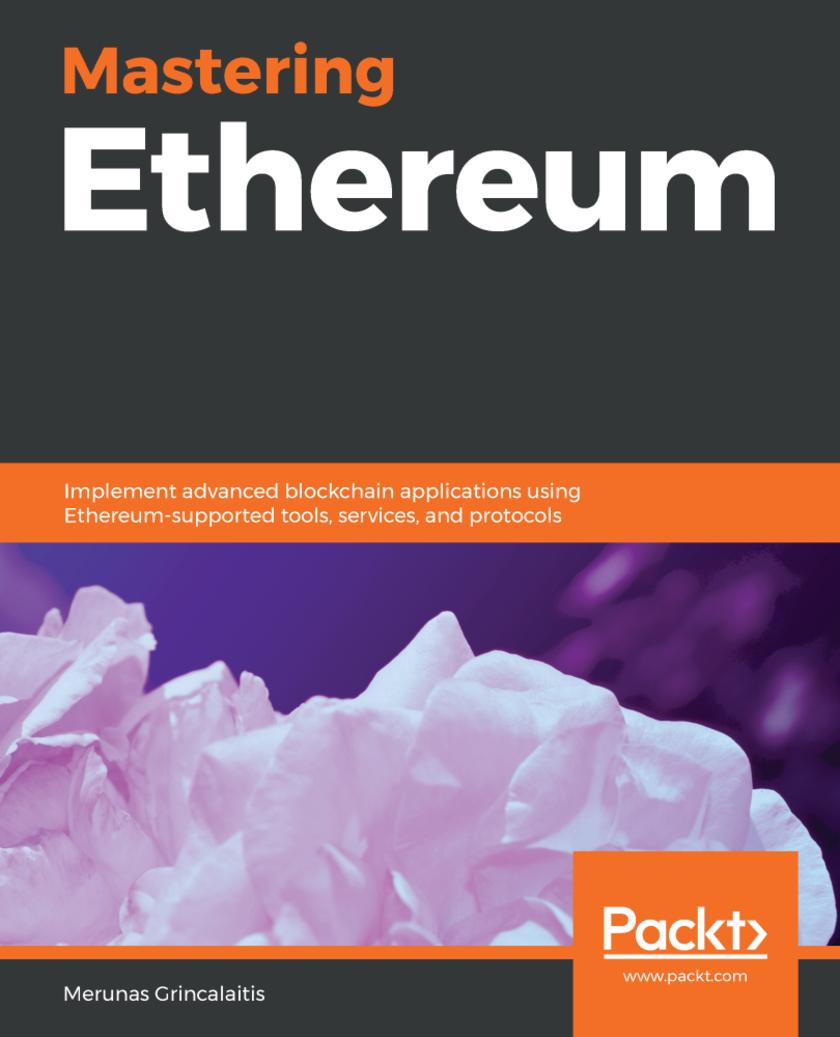
Mastering Ethereum
¥62.12
An expert guide to implementing fast, secure, and scalable decentralized applications that work with thousands of users in real time Key Features * Implement advanced features of the Ethereum network to build powerful decentralized applications * Build smart contracts on different domains using the programming techniques of Solidity and Vyper * Explore the architecture of Ethereum network to understand advanced use cases of blockchain development Book Description Ethereum is one of the commonly used platforms for building blockchain applications. It's a decentralized platform for applications that can run exactly as programmed without being affected by fraud, censorship, or third-party interference. This book will give you a deep understanding of how blockchain works so that you can discover the entire ecosystem, core components, and its implementations. You will get started by understanding how to configure and work with various Ethereum protocols for developing dApps. Next, you will learn to code and create powerful smart contracts that scale with Solidity and Vyper. You will then explore the building blocks of the dApps architecture, and gain insights on how to create your own dApp through a variety of real-world examples. The book will even guide you on how to deploy your dApps on multiple Ethereum instances with the required best practices and techniques. The next few chapters will delve into advanced topics such as, building advanced smart contracts and multi-page frontends using Ethereum blockchain. You will also focus on implementing machine learning techniques to build decentralized autonomous applications, in addition to covering several use cases across a variety of domains such as, social media and e-commerce. By the end of this book, you will have the expertise you need to build decentralized autonomous applications confidently. What you will learn * Apply scalability solutions on dApps with Plasma and state channels * Understand the important metrics of blockchain for analyzing and determining its state * Develop a decentralized web application using React.js and Node.js * Create oracles with Node.js to provide external data to smart contracts * Get to grips with using Etherscan and block explorers for various transactions * Explore web3.js, Solidity, and Vyper for dApps communication * Deploy apps with multiple Ethereum instances including TestRPC, private chain, test chain, and mainnet Who this book is for This book is for anyone who wants to build fast, highly secure, and transactional decentralized applications. If you are an Ethereum developer looking to perfect your existing skills in building powerful blockchain applications, then this book is for you. Basic knowledge of Ethereum and blockchain is necessary to understand the concepts covered in this book.
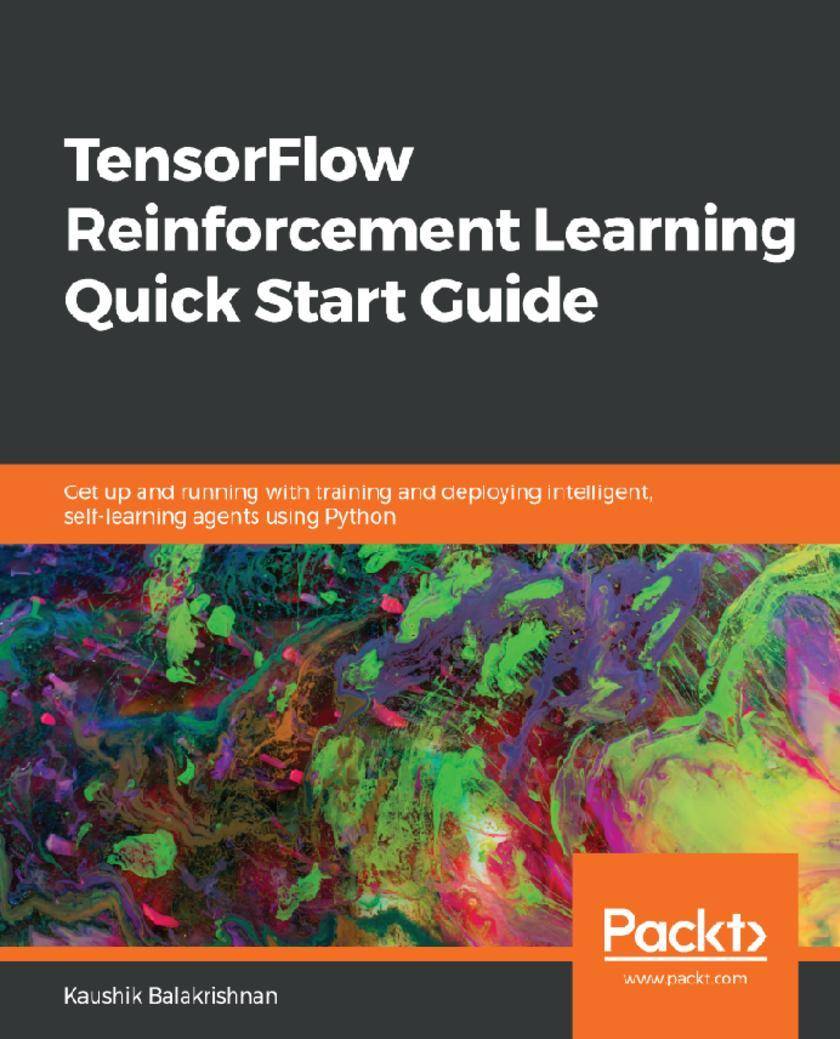
TensorFlow Reinforcement Learning Quick Start Guide
¥45.77
Leverage the power of Tensorflow to Create powerful software agents that can self-learn to perform real-world tasks Key Features * Explore efficient Reinforcement Learning algorithms and code them using TensorFlow and Python * Train Reinforcement Learning agents for problems, ranging from computer games to autonomous driving. * Formulate and devise selective algorithms and techniques in your applications in no time. Book Description Advances in reinforcement learning algorithms have made it possible to use them for optimal control in several different industrial applications. With this book, you will apply Reinforcement Learning to a range of problems, from computer games to autonomous driving. The book starts by introducing you to essential Reinforcement Learning concepts such as agents, environments, rewards, and advantage functions. You will also master the distinctions between on-policy and off-policy algorithms, as well as model-free and model-based algorithms. You will also learn about several Reinforcement Learning algorithms, such as SARSA, Deep Q-Networks (DQN), Deep Deterministic Policy Gradients (DDPG), Asynchronous Advantage Actor-Critic (A3C), Trust Region Policy Optimization (TRPO), and Proximal Policy Optimization (PPO). The book will also show you how to code these algorithms in TensorFlow and Python and apply them to solve computer games from OpenAI Gym. Finally, you will also learn how to train a car to drive autonomously in the Torcs racing car simulator. By the end of the book, you will be able to design, build, train, and evaluate feed-forward neural networks and convolutional neural networks. You will also have mastered coding state-of-the-art algorithms and also training agents for various control problems. What you will learn * Understand the theory and concepts behind modern Reinforcement Learning algorithms * Code state-of-the-art Reinforcement Learning algorithms with discrete or continuous actions * Develop Reinforcement Learning algorithms and apply them to training agents to play computer games * Explore DQN, DDQN, and Dueling architectures to play Atari's Breakout using TensorFlow * Use A3C to play CartPole and LunarLander * Train an agent to drive a car autonomously in a simulator Who this book is for Data scientists and AI developers who wish to quickly get started with training effective reinforcement learning models in TensorFlow will find this book very useful. Prior knowledge of machine learning and deep learning concepts (as well as exposure to Python programming) will be useful.
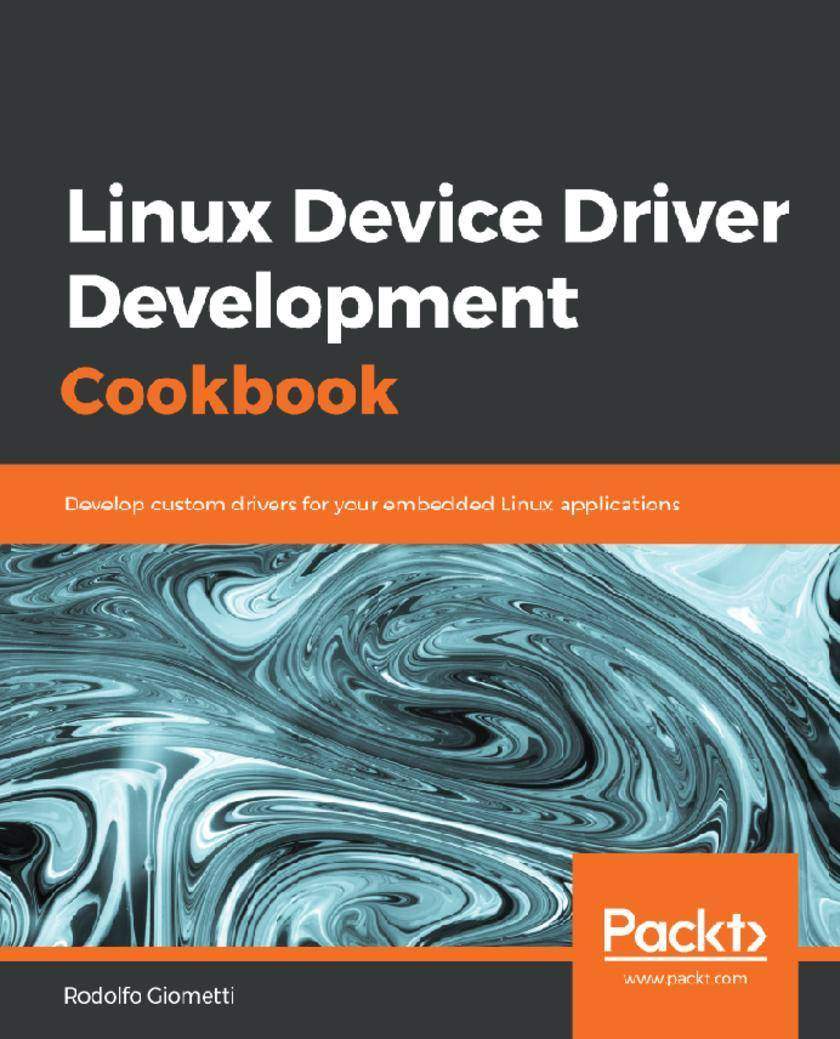
Linux Device Driver Development Cookbook
¥70.84
Over 30 recipes to develop custom drivers for your embedded Linux applications. Key Features * Use Kernel facilities to develop powerful drivers * Via a practical approach, learn core concepts of developing device drivers * Program a custom character device to get access to kernel internals Book Description Linux is a unified kernel that is widely used to develop embedded systems. As Linux has turned out to be one of the most popular operating systems used, the interest in developing proprietary device drivers has also increased. Device drivers play a critical role in how the system performs and ensures that the device works in the manner intended. By offering several examples on the development of character devices and how to use other kernel internals, such as interrupts, kernel timers, and wait queue, as well as how to manage a device tree, you will be able to add proper management for custom peripherals to your embedded system. You will begin by installing the Linux kernel and then configuring it. Once you have installed the system, you will learn to use the different kernel features and the character drivers. You will also cover interrupts in-depth and how you can manage them. Later, you will get into the kernel internals required for developing applications. Next, you will implement advanced character drivers and also become an expert in writing important Linux device drivers. By the end of the book, you will be able to easily write a custom character driver and kernel code as per your requirements. What you will learn * Become familiar with the latest kernel releases (4.19+/5.x) running on the ESPRESSObin devkit, an ARM 64-bit machine * Download, configure, modify, and build kernel sources * Add and remove a device driver or a module from the kernel * Master kernel programming * Understand how to implement character drivers to manage different kinds of computer peripherals * Become well versed with kernel helper functions and objects that can be used to build kernel applications * Acquire a knowledge of in-depth concepts to manage custom hardware with Linux from both the kernel and user space Who this book is for This book will help anyone who wants to develop their own Linux device drivers for embedded systems. Having basic hand-on with Linux operating system and embedded concepts is necessary.
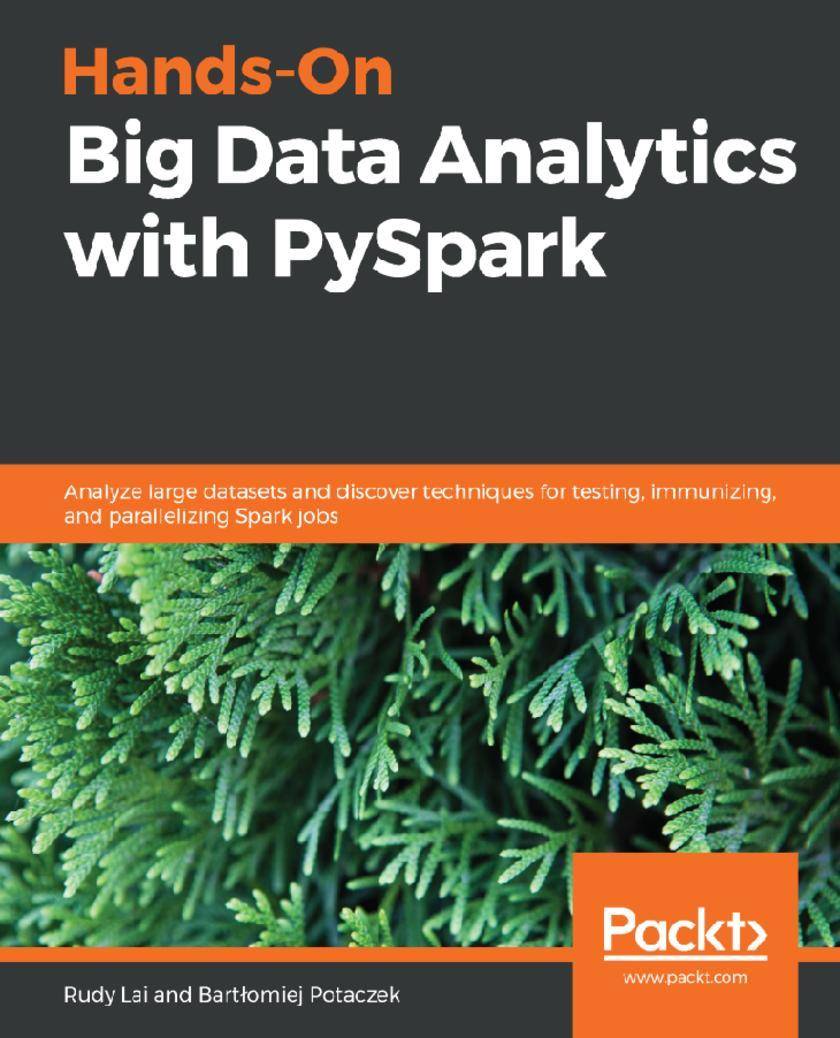
Hands-On Big Data Analytics with PySpark
¥43.59
Use PySpark to easily crush messy data at-scale and discover proven techniques to create testable, immutable, and easily parallelizable Spark jobs Key Features * Work with large amounts of agile data using distributed datasets and in-memory caching * Source data from all popular data hosting platforms, such as HDFS, Hive, JSON, and S3 * Employ the easy-to-use PySpark API to deploy big data Analytics for production Book Description Apache Spark is an open source parallel-processing framework that has been around for quite some time now. One of the many uses of Apache Spark is for data analytics applications across clustered computers. In this book, you will not only learn how to use Spark and the Python API to create high-performance analytics with big data, but also discover techniques for testing, immunizing, and parallelizing Spark jobs. You will learn how to source data from all popular data hosting platforms, including HDFS, Hive, JSON, and S3, and deal with large datasets with PySpark to gain practical big data experience. This book will help you work on prototypes on local machines and subsequently go on to handle messy data in production and at scale. This book covers installing and setting up PySpark, RDD operations, big data cleaning and wrangling, and aggregating and summarizing data into useful reports. You will also learn how to implement some practical and proven techniques to improve certain aspects of programming and administration in Apache Spark. By the end of the book, you will be able to build big data analytical solutions using the various PySpark offerings and also optimize them effectively. What you will learn * Get practical big data experience while working on messy datasets * Analyze patterns with Spark SQL to improve your business intelligence * Use PySpark's interactive shell to speed up development time * Create highly concurrent Spark programs by leveraging immutability * Discover ways to avoid the most expensive operation in the Spark API: the shuffle operation * Re-design your jobs to use reduceByKey instead of groupBy * Create robust processing pipelines by testing Apache Spark jobs Who this book is for This book is for developers, data scientists, business analysts, or anyone who needs to reliably analyze large amounts of large-scale, real-world data. Whether you're tasked with creating your company's business intelligence function or creating great data platforms for your machine learning models, or are looking to use code to magnify the impact of your business, this book is for you.
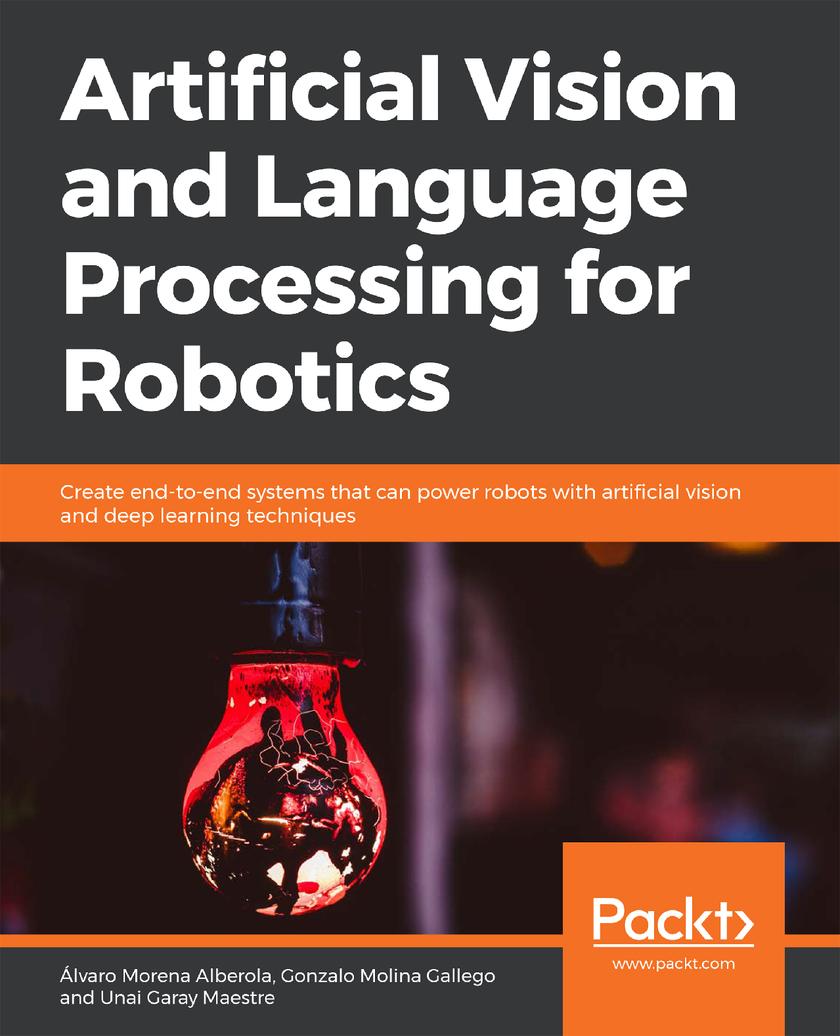
Artificial Vision and Language Processing for Robotics
¥62.12
Create end-to-end systems that can power robots with artificial vision and deep learning techniques Key Features * Study ROS, the main development framework for robotics, in detail * Learn all about convolutional neural networks, recurrent neural networks, and robotics * Create a chatbot to interact with the robot Book Description Artificial Vision and Language Processing for Robotics begins by discussing the theory behind robots. You'll compare different methods used to work with robots and explore computer vision, its algorithms, and limits. You'll then learn how to control the robot with natural language processing commands. You'll study Word2Vec and GloVe embedding techniques, non-numeric data, recurrent neural network (RNNs), and their advanced models. You'll create a simple Word2Vec model with Keras, as well as build a convolutional neural network (CNN) and improve it with data augmentation and transfer learning. You'll study the ROS and build a conversational agent to manage your robot. You'll also integrate your agent with the ROS and convert an image to text and text to speech. You'll learn to build an object recognition system using a video. By the end of this book, you'll have the skills you need to build a functional application that can integrate with a ROS to extract useful information about your environment. What you will learn * Explore the ROS and build a basic robotic system * Understand the architecture of neural networks * Identify conversation intents with NLP techniques * Learn and use the embedding with Word2Vec and GloVe * Build a basic CNN and improve it using generative models * Use deep learning to implement artificial intelligence(AI)and object recognition * Develop a simple object recognition system using CNNs * Integrate AI with ROS to enable your robot to recognize objects Who this book is for Artificial Vision and Language Processing for Robotics is for robotics engineers who want to learn how to integrate computer vision and deep learning techniques to create complete robotic systems. It will prove beneficial to you if you have working knowledge of Python and a background in deep learning. Knowledge of the ROS is a plus.
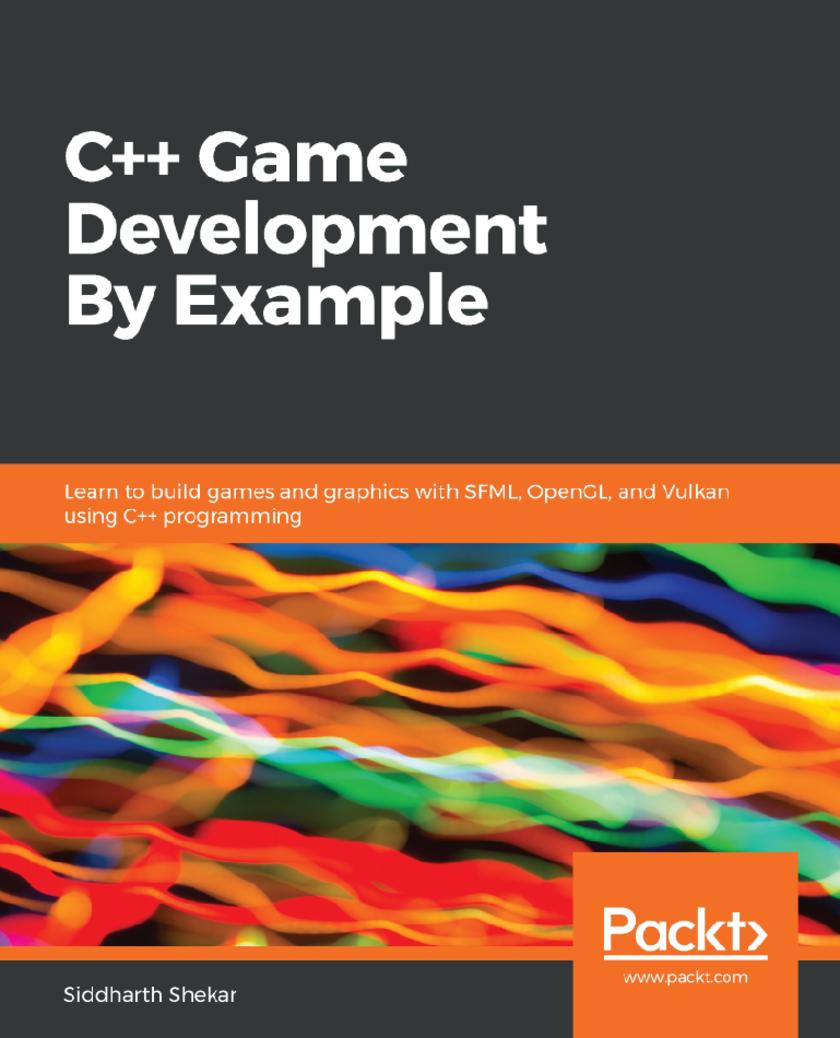
C++ Game Development By Example
¥62.12
Explore modern game programming and rendering techniques to build games using C++ programming language and its popular libraries Key Features * Learn how you can build basic 2D and complex 3D games with C++ * Understand shadows, texturing, lighting, and rendering in 3D game development using OpenGL * Uncover modern graphics programming techniques and GPU compute methods using the Vulkan API Book Description Although numerous languages are currently being used to develop games, C++ remains the standard for fabricating expert libraries and tool chains for game development. This book introduces you to the world of game development with C++. C++ Game Development By Example starts by touching upon the basic concepts of math, programming, and computer graphics and creating a simple side-scrolling action 2D game. You'll build a solid foundation by studying basic game concepts such as creating game loops, rendering 2D game scenes using SFML, 2D sprite creation and animation, and collision detection. The book will help you advance to creating a 3D physics puzzle game using modern OpenGL and the Bullet physics engine. You'll understand the graphics pipeline, which entails creating 3D objects using vertex and index buffers and rendering them to the scene using vertex and fragment shaders. Finally, you'll create a basic project using the Vulkan library that'll help you get to grips with creating swap chains, image views, render passes, and frame buffers for building high-performance graphics in your games. By the end of this book, you’ll be ready with 3 compelling projects created with SFML, the Vulkan API, and OpenGL, and you'll be able take your game and graphics programming skills to the next level. What you will learn * Understand shaders and how to write a basic vertex and fragment shader * Build a Visual Studio project and add SFML to it * Discover how to create sprite animations and a game character class * Add sound effects and background music to your game * Grasp how to integrate Vulkan into Visual Studio * Create shaders and convert them to the SPIR-V binary format Who this book is for If you’re a developer keen to learn game development with C++ or get up to date with game development, this book is for you. Some knowledge of C++ programming is assumed.
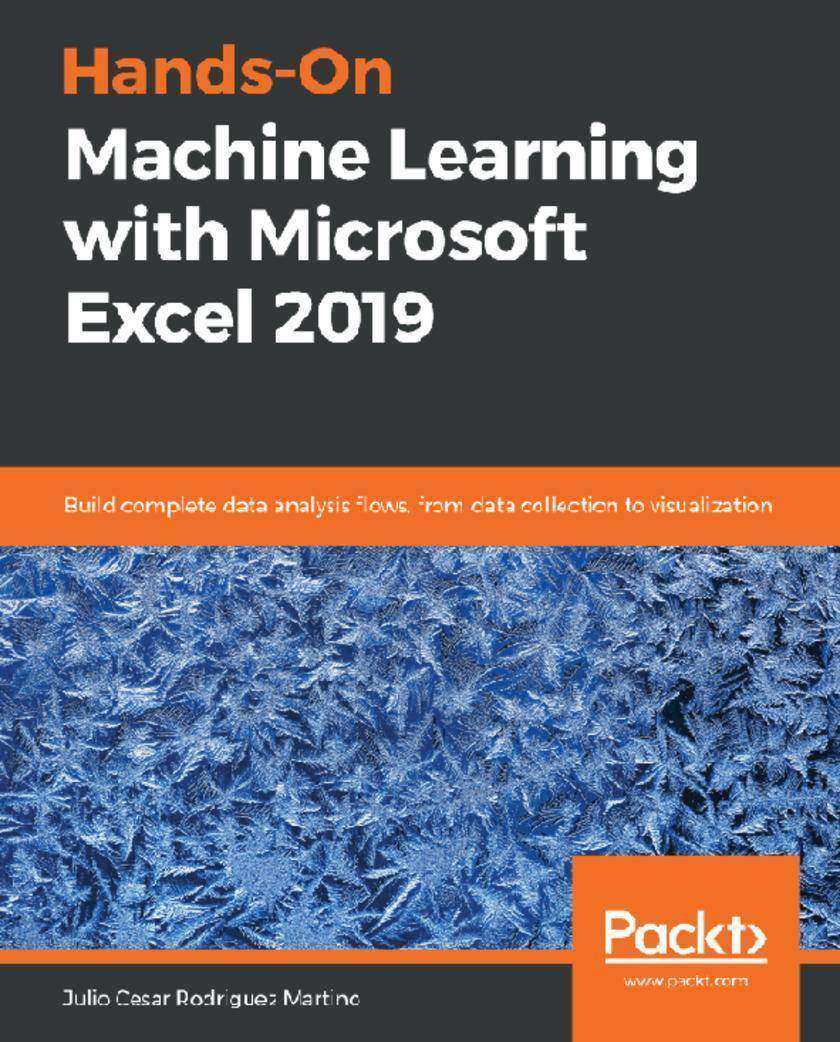
Hands-On Machine Learning with Microsoft Excel 2019
¥70.84
A practical guide to getting the most out of Excel, using it for data preparation, applying machine learning models (including cloud services) and understanding the outcome of the data analysis. Key Features * Use Microsoft's product Excel to build advanced forecasting models using varied examples * Cover range of machine learning tasks such as data mining, data analytics, smart visualization, and more * Derive data-driven techniques using Excel plugins and APIs without much code required Book Description We have made huge progress in teaching computers to perform difficult tasks, especially those that are repetitive and time-consuming for humans. Excel users, of all levels, can feel left behind by this innovation wave. The truth is that a large amount of the work needed to develop and use a machine learning model can be done in Excel. The book starts by giving a general introduction to machine learning, making every concept clear and understandable. Then, it shows every step of a machine learning project, from data collection, reading from different data sources, developing models, and visualizing the results using Excel features and offerings. In every chapter, there are several examples and hands-on exercises that will show the reader how to combine Excel functions, add-ins, and connections to databases and to cloud services to reach the desired goal: building a full data analysis flow. Different machine learning models are shown, tailored to the type of data to be analyzed. At the end of the book, the reader is presented with some advanced use cases using Automated Machine Learning, and artificial neural network, which simplifies the analysis task and represents the future of machine learning. What you will learn * Use Excel to preview and cleanse datasets * Understand correlations between variables and optimize the input to machine learning models * Use and evaluate different machine learning models from Excel * Understand the use of different visualizations * Learn the basic concepts and calculations to understand how artificial neural networks work * Learn how to connect Excel to the Microsoft Azure cloud * Get beyond proof of concepts and build fully functional data analysis flows Who this book is for This book is for data analysis, machine learning enthusiasts, project managers, and someone who doesn't want to code much for performing core tasks of machine learning. Each example will help you perform end-to-end smart analytics. Working knowledge of Excel is required.
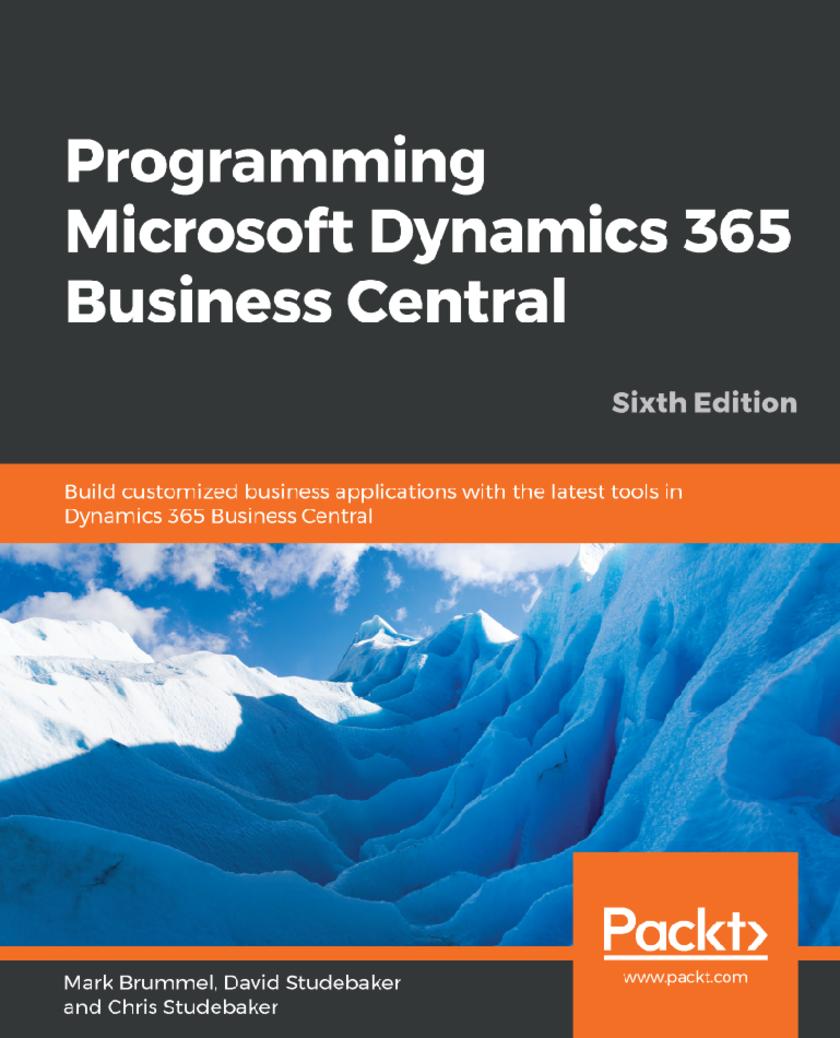
Programming Microsoft Dynamics 365 Business Central
¥88.28
Explore the fundamentals of Dynamics 365 Business Central and the Visual Studio Code development environment with the help of useful examples and case studies Key Features * Tailor your applications to best suit the needs of your business * Explore the latest features of Business Central with examples curated by industry experts * Integrate Business Central features in your applications with this comprehensive guide Book Description Microsoft Dynamics 365 Business Central is a full ERP business solution suite with a robust set of development tools to support customization and enhancement. These tools can be used to tailor Business Central's in-built applications to support complete management functions for finance, supply chain, manufacturing, and operations. Using a case study approach, this book will introduce you to Dynamics 365 Business Central and Visual Studio Code development tools to help you become a productive Business Central developer. You'll also learn how to evaluate a product's development capabilities and manage Business Central-based development and implementation. You'll explore application structure, the construction of and uses for each object type, and how it all fits together to build apps that meet special business requirements. By the end of this book, you'll understand how to design and develop high-quality software using the Visual Studio Code development environment, the AL language paired with the improved editor, patterns, and features. What you will learn * Programming using the AL language in the Visual Studio Code development environment * Explore functional design and development using AL * How to build interactive pages and learn how to extract data for users * How to use best practices to design and develop modifications for new functionality integrated with the standard Business Central software * Become familiar with deploying the broad range of components available in a Business Central system * Create robust, viable systems to address specific business requirements Who this book is for If you want to learn about Dynamics 365 Business Central's powerful and extensive built-in development capabilities, this is the book for you. ERP consultants and managers of Business Central development will also find this book helpful. Although you aren't expected to have worked with Dynamics Business Central, basic understanding of programming and familiarity with business application software will help you understand the concepts covered in this book.
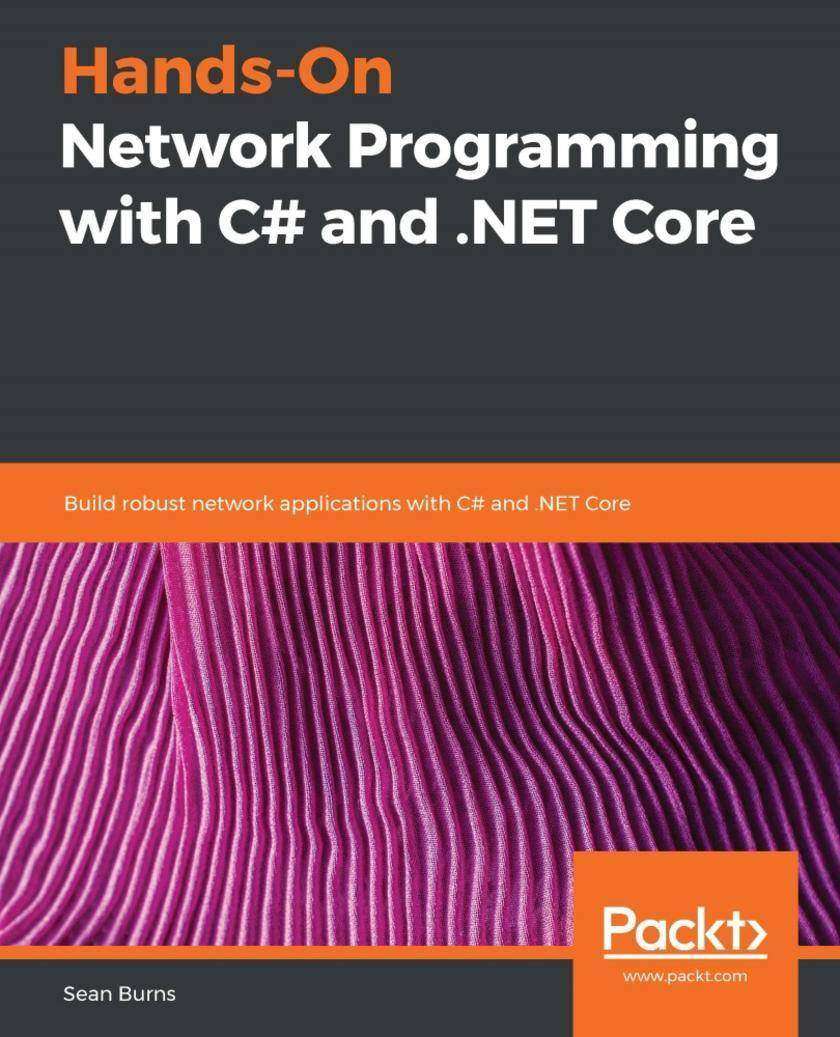
Hands-On Network Programming with C# and .NET Core
¥73.02
A comprehensive guide to understanding network architecture, communication protocols, and network analysis to build secure applications compatible with the latest versions of C# 8 and .NET Core 3.0 Key Features * Explore various network architectures that make distributed programming possible * Learn how to make reliable software by writing secure interactions between clients and servers * Use .NET Core for network device automation, DevOps, and software-defined networking Book Description The C# language and the .NET Core application framework provide the tools and patterns required to make the discipline of network programming as intuitive and enjoyable as any other aspect of C# programming. With the help of this book, you will discover how the C# language and the .NET Core framework make this possible. The book begins by introducing the core concepts of network programming, and what distinguishes this field of programming from other disciplines. After this, you will gain insights into concepts such as transport protocols, sockets and ports, and remote data streams, which will provide you with a holistic understanding of how network software fits into larger distributed systems. The book will also explore the intricacies of how network software is implemented in a more explicit context, by covering sockets, connection strategies such as Transmission Control Protocol (TCP) and User Datagram Protocol (UDP), asynchronous processing, and threads. You will then be able to work through code examples for TCP servers, web APIs served over HTTP, and a Secure Shell (SSH) client. By the end of this book, you will have a good understanding of the Open Systems Interconnection (OSI) network stack, the various communication protocols for that stack, and the skills that are essential to implement those protocols using the C# programming language and the .NET Core framework. What you will learn * Understand the breadth of C#'s network programming utility classes * Utilize network-layer architecture and organizational strategies * Implement various communication and transport protocols within C# * Discover hands-on examples of distributed application development * Gain hands-on experience with asynchronous socket programming and streams * Learn how C# and the .NET Core runtime interact with a hosting network * Understand a full suite of network programming tools and features Who this book is for If you're a .NET developer or a system administrator with .NET experience and are looking to get started with network programming, then this book is for you. Basic knowledge of C# and .NET is assumed, in addition to a basic understanding of common web protocols and some high-level distributed system designs.
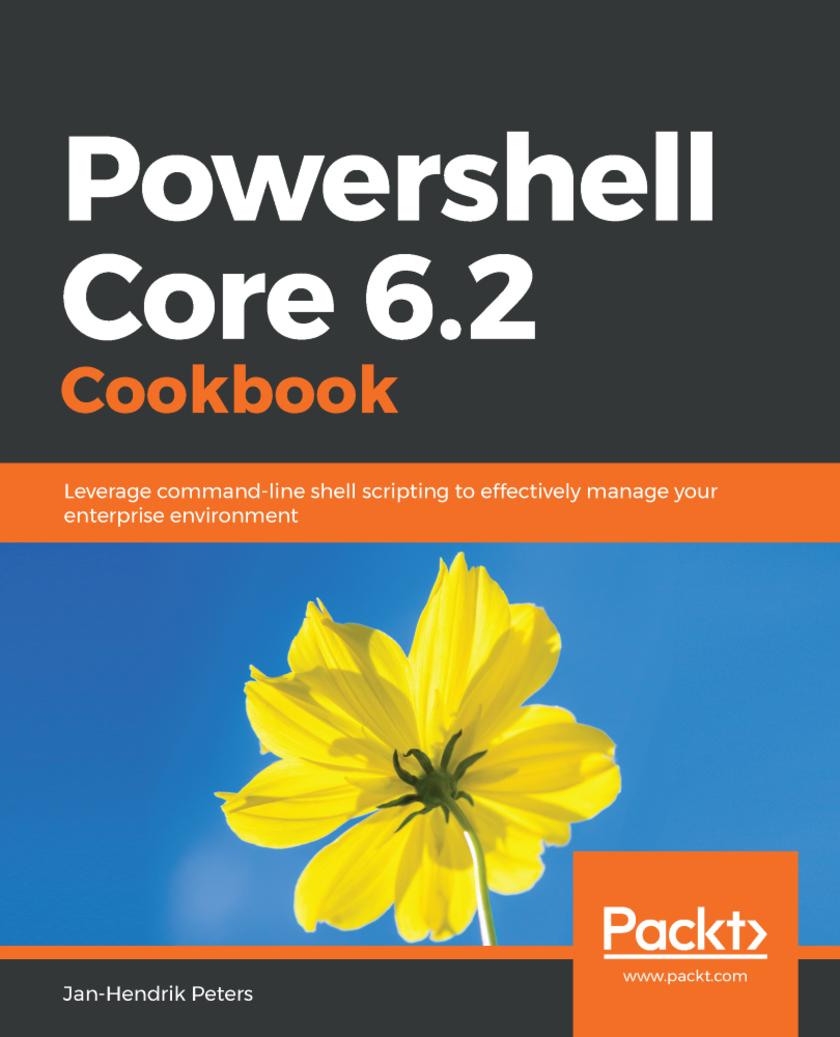
Powershell Core 6.2 Cookbook
¥70.84
Make use of hands-on recipes for many tasks that are typically encountered in both the on-premises as well as the cloud world. Key Features * A recipe-based guide to help you build effective administrative solutions * Gain hands-on experience with the newly added features of PowerShell Core * Manage critical business environments with professional scripting practices Book Description This book will follow a recipe-based approach and start off with an introduction to the fundamentals of PowerShell, and explaining how to install and run it through simple examples. Next, you will learn how to use PowerShell to access and manipulate data and how to work with different streams as well. You will also explore the object model which will help with regard to PowerShell function deployment. Going forward, you will get familiar with the pipeline in its different use cases. The next set of chapters will deal with the different ways of accessing data in PowerShell. You will also learn to automate various tasks in Windows and Linux using PowerShell Core, as well as explore Windows Server. Later, you will be introduced to Remoting in PowerShell Core and Just Enough Administration concept. The last set of chapters will help you understand the management of a private and public cloud with PowerShell Core. You will also learn how to access web services and explore the high-performance scripting methods. By the end of this book, you will gain the skills to manage complex tasks effectively along with increasing the performance of your environment. What you will learn * Leverage cross-platform interaction with systems * Make use of the PowerShell recipes for frequent tasks * Get a better understanding of the inner workings of PowerShell * Understand the compatibility of built-in Windows modules with PowerShell Core * Learn best practices associated with PowerShell scripting * Avoid common pitfalls and mistakes Who this book is for This book will be for windows administrators who want to enhance their PowerShell scripting skills to the next level. System administrators wanting to automate common to complex tasks with PowerShell scripts would benefit from this book. Prior understanding on PowerShell would be necessary.
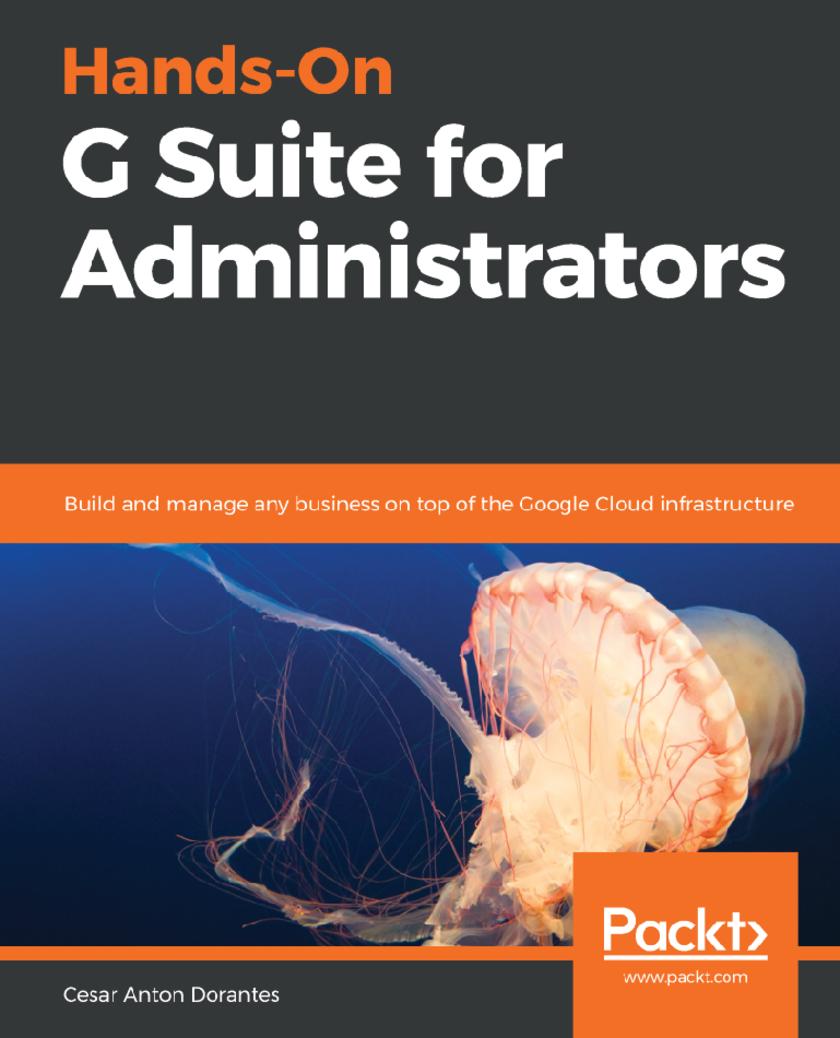
Hands-On G Suite for Administrators
¥73.02
Effectively implement and administer business solutions on any scale in a cost-effective way to have a competitive advantage using Gsuite Key Features * Enhance administration with Admin console and Google Apps Script * Prepare for the G suite certification using the concepts in the book * Learn how to use reports to monitor, troubleshoot and optimize G Suite Book Description Hands-On G Suite for Administrators is a comprehensive hands-on guide to G Suite Administration that will prepare you with all you need to know to become a certified G Suite Administrator, ready to handle all the business scales, from a small office to a large enterprise. You will start by learning the main features, tools, and services from G Suite for Business and then, you will explore all it has to offer and the best practices, so you can make the most out of it. We will explore G Suite tools in depth so you and your team get everything you need -combination of tools, settings and practices- to succeed in an intuitive, safe and collaborative way. While learning G Suite tools you will also learn how to use Google Sites and App Maker, to create from your corporate site to internal tools, live reports that seamlessly integrate with live documents, and advanced Google Services. Finally, you will learn how to set up, analyze and enforce Security, Privacy for your business and how to efficiently troubleshoot a wide variety of issues. What you will learn * Setting up G Suite for the business account * Work with the advanced setup of additional business domains and administrate users in multiple * Explore Guite's extensive set of features to cover your team’s creation and collaboration needs * Setup, manage and analyze your security to prevent, find or fix any security problem in G Suite * Manage Mobile devices and integrate with third-party apps * Create cloud documents, working alone or collaborating in real time Who this book is for System administrators, cloud administrators, business professionals, and aspirants of G Suite admin certificate wanting to master implementing G Suite tools for various admin tasks and effectively implement the G Suite administration for business
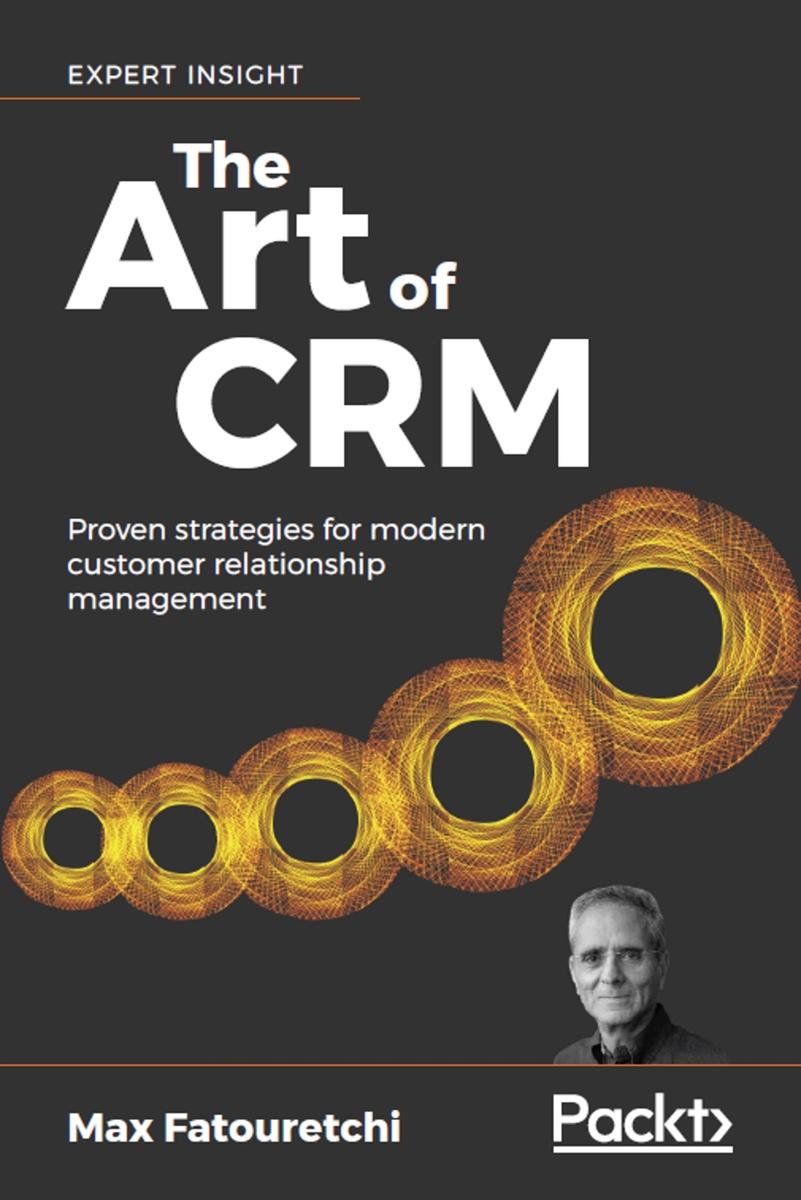
The Art of CRM
¥70.84
This CRM masterclass gives you a proven approach to modern customer relationship management Key Features * Proven techniques to architect CRM systems that perform well, that are built on time and on budget, and that deliver value for many years * Combines technical knowledge and business experience to provide a powerful guide to CRM implementation * Covers modern CRM opportunities and challenges including machine learning, cloud hosting, and GDPR compliance Book Description CRM systems have delivered huge value to organizations. This book shares proven and cutting-edge techniques to increase the power of CRM even further. In The Art of CRM, Max Fatouretchi shares his decades of experience building successful CRM systems that make a real difference to business performance. Through clear processes, actionable advice, and informative case studies, The Art of CRM teaches you to design successful CRM systems for your clients. Fatouretchi, founder of Academy4CRM institute, draws on his experience over 20 years and 200 CRM implementations worldwide. Bringing CRM bang up to date, The Art of CRM shows how to add AI and machine learning, ensure compliance with GDPR, and choose between on-premise, cloud, and hybrid hosting solutions. If you’re looking for an expert guide to real-world CRM implementations, this book is for you. What you will learn * Deliver CRM systems that are on time, on budget, and bring lasting value to organizations * Build CRM that excels at operations, analytics, and collaboration * Gather requirements effectively: identify key pain points, objectives, and functional requirements * Develop customer insight through 360-degree client view and client profiling * Turn customer requirements into a CRM design spec * Architect your CRM platform * Bring machine learning and artificial intelligence into your CRM system * Ensure compliance with GDPR and other critical regulations * Choose between on-premise, cloud, and hybrid hosting solutions Who this book is for CRM practitioners who want to update their work with new, proven techniques and approaches
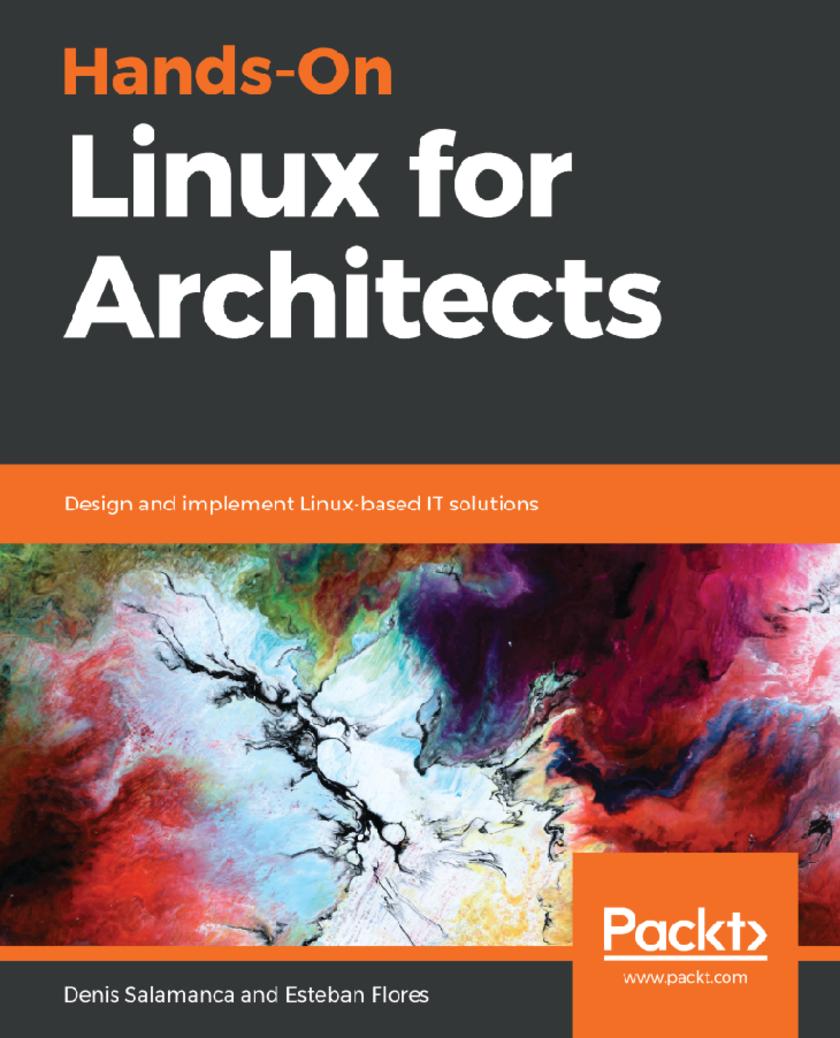
Hands-On Linux for Architects
¥70.84
Explore practical use cases to learn everything from Linux components, and functionalities, through to hardware and software support Key Features * Gain a clear understanding of how to design a Linux environment * Learn more about the architecture of the modern Linux operating system(OS) * Understand infrastructure needs and design a high-performing computing environment Book Description It is very important to understand the flexibility of an infrastructure when designing an efficient environment. In this book, you will cover everything from Linux components and functionalities through to hardware and software support, which will help you to implement and tune effective Linux-based solutions. This book gets started with an overview of Linux design methodology. Next, you will focus on the core concepts of designing a solution. As you progress, you will gain insights into the kinds of decisions you need to make when deploying a high-performance solution using Gluster File System (GlusterFS). In the next set of chapters, the book will guide you through the technique of using Kubernetes as an orchestrator for deploying and managing containerized applications. In addition to this, you will learn how to apply and configure Kubernetes for your NGINX application. You’ll then learn how to implement an ELK stack, which is composed of Elasticsearch, Logstash, and Kibana. In the concluding chapters, you will focus on installing and configuring a Saltstack solution to manage different Linux distributions, and explore a variety of design best practices. By the end of this book, you will be well-versed with designing a high-performing computing environment for complex applications to run on. By the end of the book, you will have delved inside the most detailed technical conditions of designing a solution, and you will have also dissected every aspect in detail in order to implement and tune open source Linux-based solutions What you will learn * Study the basics of infrastructure design and the steps involved * Expand your current design portfolio with Linux-based solutions * Discover open source software-based solutions to optimize your architecture * Understand the role of high availability and fault tolerance in a resilient design * Identify the role of containers and how they improve your continuous integration and continuous deployment pipelines * Gain insights into optimizing and making resilient and highly available designs by applying industry best practices Who this book is for This intermediate-level book is for Linux system administrators, Linux support engineers, DevOps engineers, Linux consultants or any open source technology professional looking to learn or expand their knowledge in architecting, designing and implementing solutions based on Linux and open source software. Prior experience in Linux is required.
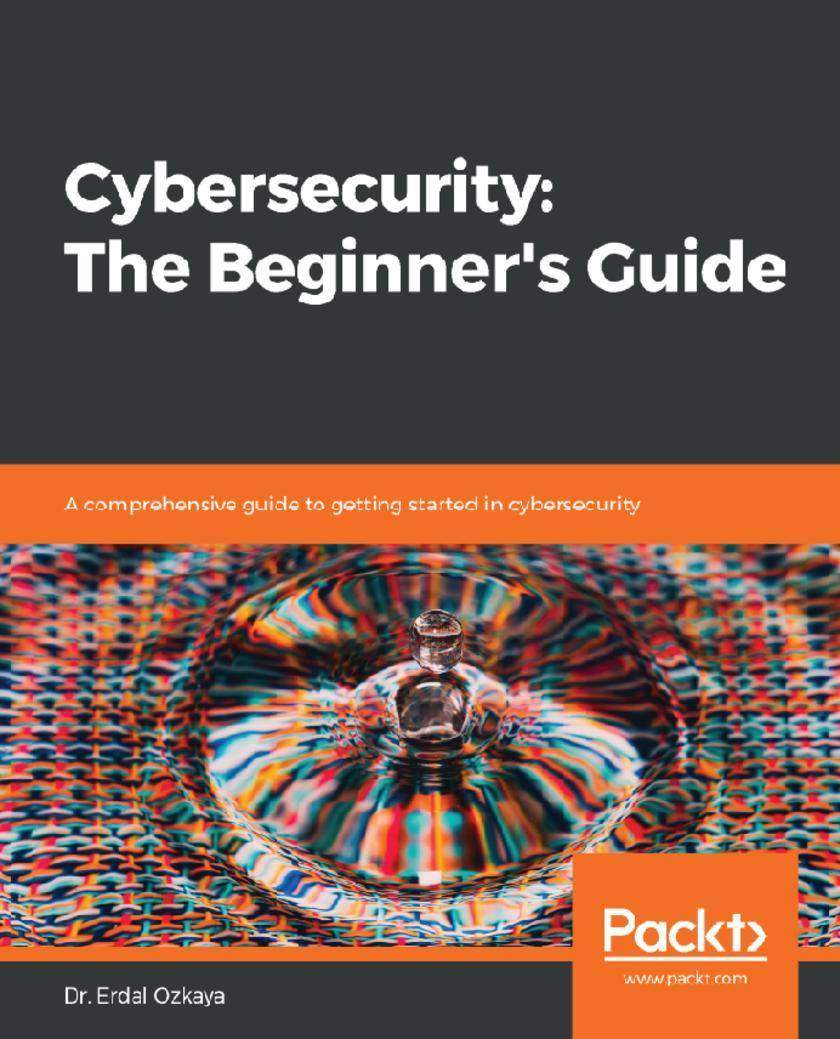
Cybersecurity: The Beginner's Guide
¥53.40
Understand the nitty-gritty of Cybersecurity with ease Key Features * Align your security knowledge with industry leading concepts and tools * Acquire required skills and certifications to survive the ever changing market needs * Learn from industry experts to analyse, implement, and maintain a robust environment Book Description It's not a secret that there is a huge talent gap in the cybersecurity industry. Everyone is talking about it including the prestigious Forbes Magazine, Tech Republic, CSO Online, DarkReading, and SC Magazine, among many others. Additionally, Fortune CEO's like Satya Nadella, McAfee's CEO Chris Young, Cisco's CIO Colin Seward along with organizations like ISSA, research firms like Gartner too shine light on it from time to time. This book put together all the possible information with regards to cybersecurity, why you should choose it, the need for cyber security and how can you be part of it and fill the cybersecurity talent gap bit by bit. Starting with the essential understanding of security and its needs, we will move to security domain changes and how artificial intelligence and machine learning are helping to secure systems. Later, this book will walk you through all the skills and tools that everyone who wants to work as security personal need to be aware of. Then, this book will teach readers how to think like an attacker and explore some advanced security methodologies. Lastly, this book will deep dive into how to build practice labs, explore real-world use cases and get acquainted with various cybersecurity certifications. By the end of this book, readers will be well-versed with the security domain and will be capable of making the right choices in the cybersecurity field. What you will learn * Get an overview of what cybersecurity is and learn about the various faces of cybersecurity as well as identify domain that suits you best * Plan your transition into cybersecurity in an efficient and effective way * Learn how to build upon your existing skills and experience in order to prepare for your career in cybersecurity Who this book is for This book is targeted to any IT professional who is looking to venture in to the world cyber attacks and threats. Anyone with some understanding or IT infrastructure workflow will benefit from this book. Cybersecurity experts interested in enhancing their skill set will also find this book useful.




 购物车
购物车 个人中心
个人中心



